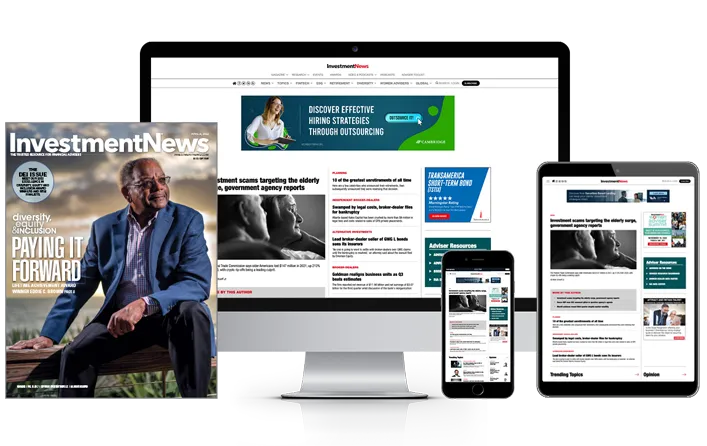International money managers drawn to dividends have been gobbling up shares of U.S.-based companies over the past year, according to Moudy El-Khodr, co-manager of the ING Global Equity Dividend Fund Ticker:(IAGEX).
The fund's 42% weighting in U.S. stocks is nearly double the 22% weighting it held a year ago.
Mr. El-Khodr, who along with Kris Hermie manages more than $5 billion in global dividend portfolios, said the stock market turmoil over the past two years has helped move a lot of U.S. stocks onto his research radar screen.
“The United States is not known for being the most generous country in terms of dividends, but with the price pressure on stocks over the past 12 to 18 months, we're seeing a lot more U.S. companies meeting our screens,” he said.
With to qualify for consideration, a company must have a dividend yield of at least 2.5%.
If that yield drops below 2%, the stock is sold, “even if the entire planet is bullish on the stock,” said Mr. El-Khodr.
In some respects, the strategy could be described as contrarian, considering that a lower stock price results in a higher dividend yield.
Therefore, the ING strategy is almost forced to buy stocks when they're on sale.
“When nobody likes a sector, it pops up on our screens,” said Mr. Hermie. “We believe a long-term focus on dividends should produce long-term performance.”
While the U.S. stock market did experience a rally of more than 60% over the final nine months of last year, the longer-term trend is still below the levels of 2007.
“Last year was a very good year for U.S. stocks, but they were coming off very low levels,” said Mr. El-Khodr. “For those companies that maintained their dividend payouts at the March low, the yields ended up being very high.”
Globally, there are about 700 companies that currently qualify for the fund by having a market capitalization of at least $1 billion and a dividend yield of at least 2.5%.
At the stock market's low point in March, there were 1,700 companies that met the initial screen.
The fund holds between 100 and 120 stocks and is managed to maintain an average dividend yield of at least one percentage point above that of the MSCI World Developed Markets Index.
The fund's current dividend yield is 4.4%, which compares with the benchmark at just under 3%.
Portfolio Manager Perspectives are regular interviews with some of the most respected and influential fund managers in the investment industry. For more information, please visit
InvestmentNews.com/pmperspectives .






